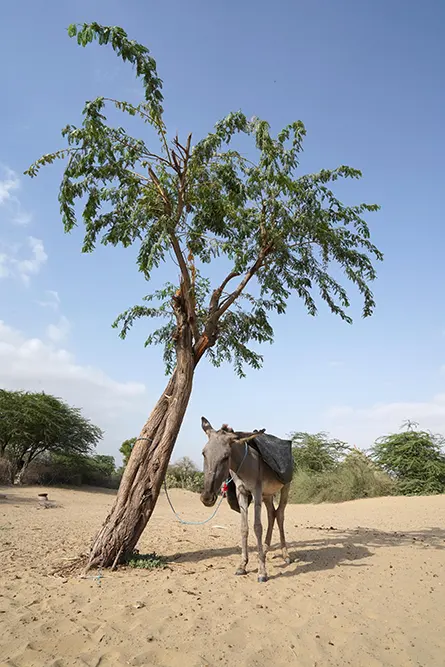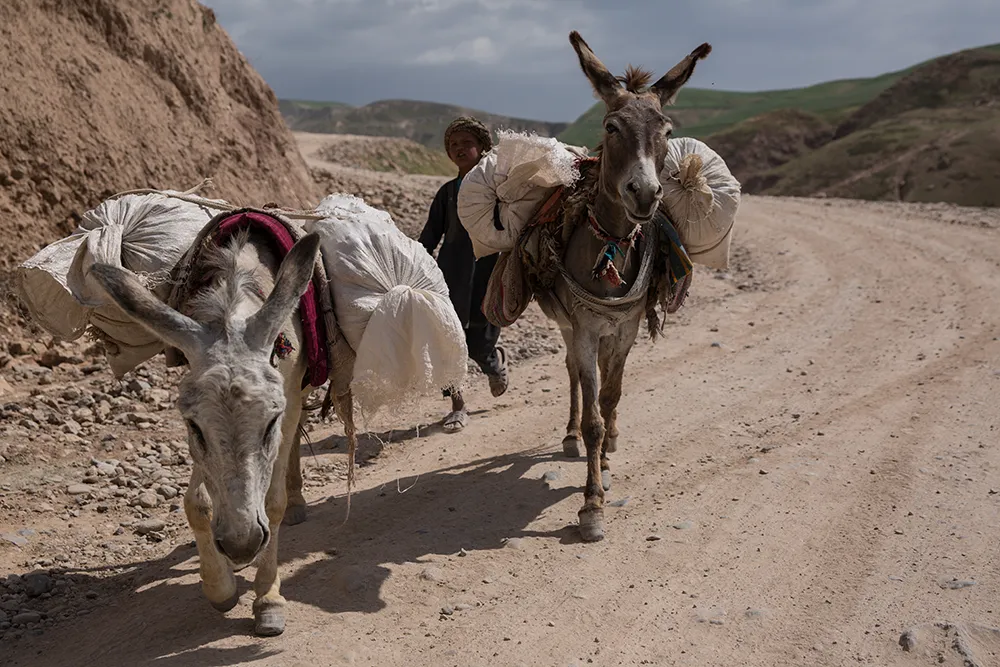We love Donkeys.* They’re hard-working, strong, resilient, loyal, and remarkably cute. Because they don’t always get the love they deserve, we thought we’d pay homage to their contribution to the survival of mankind… and as an excuse to share lots of pictures of Donkeys from our extensive collection.
Big ears, big heart
Some years back, we received a grainy image from our colleagues in Chad of a young woman at a camp for people displaced by violence in the west of the country. Obviously exhausted, she was lying face down on the back of a Donkey, fast asleep. “This is how she arrived,” according to Christian Olodo, who was overseeing Concern’s emergency operation in the region at the time. “The donkey brought her here. They had been traveling for days.”

We can’t think of a more fitting way to encapsulate the character of a creature that is truly magnificent in its own stubborn, big-eared way. The Donkey has contributed so much to mankind over the millennia, and yet received very little of the type of adulation heaped upon its equine cousin. As the old saying goes: “The Donkey sweats, but the horse gets the fame.”
Fun Fact: Donkeys have an extraordinary memory and can recognize areas and other Donkeys they were with up to 25 years ago. This impressive memory aids them in navigating long distances and returning to familiar places without getting lost.
Donkeys are ubiquitous in Concern’s world – even more so than the mighty Camel. The FAO estimates that there are over 50 million Equus asinus on this planet, 99% of whom live in low-middle-income countries. That’s an estimate, because let’s face it, Donkey-counting is probably not a high priority activity in many places. Ethiopia leads the way in terms of numbers, with over 11 million, followed by Sudan, Pakistan, and Chad.



Worldly and wise
There are 185 different breeds of Donkey across the world and their numbers are growing steadily, year by year. Interestingly though, while China was top of the Donkey leaderboard until quite recently, its population has fallen dramatically with the rapid expansion of the industrial economy. There has also been a rise in demand for Donkey hides for use in Chinese traditional medicine.
Fun fact: Contrary to popular belief, donkeys are highly intelligent and can problem-solve effectively. They tend to be more independent and cautious than horses, which often makes them appear stubborn. This cautious nature helps them avoid dangerous situations.
Donkeys belong to the equid family, which also includes horses, mules, and zebra. For the record, an adult male Donkey is referred to as a jack or jackass, while an adult female is known as a jenny or jennet. An immature Donkey, regardless of sex, is called a foal. Jacks are commonly bred with female horses to produce mules, whereas the less common hybrid of a male horse and a jenny results in a hinny.
Originally a wild animal, the direct ancestors of today’s Ass probably originated in the Horn of Africa. It was there that they were first domesticated, about seven thousand years ago, replacing the ox as the pack animal of choice. If you want to read more about the origins and history of Donkeys, there’s a fascinating research article in Science.

Fun fact: Some years ago, archaeologists excavating an ancient Roman villa in northeast France came across the remains of a subspecies of giant Donkey. It seems that the Romans bred them to be as big as horses as part of their dastardly plan for world domination. Like the Romans, the giant Donkeys ultimately disappeared into the annals of history.


The incredible Ass
Donkeys are incredible. Their ability to shoulder a heavy workload and soldier on through the toughest of conditions is legendary. You’ll find them high in the mountains of Afghanistan, along the shores of the Mediterranean, and deep in the jungles of West Africa. Here are some of the tasks to which they regularly add value:
- Plowing and tilling: Donkeys are used for plowing fields and preparing the soil for planting crops. They’re cheaper to run than most other options. 🫏
- Powering machinery: Mechanized agricultural equipment and fuel is often beyond the budgetary reach of small farmers and businesses, but Donkeys can provide power for threshing and milling of crops. 🫏
- Transporting harvests: Donkeys carry harvested crops from fields to homes or markets, significantly aiding in agricultural productivity. 🫏
- Water drawing and hauling: In many rural areas, Donkeys are used to draw heavy buckets of water from deep wells. They can also carry large water containers for long distances, providing households with a consistent water supply. 🫏
- Transporting goods and people: Donkeys transport firewood, building materials, and market products, often over rough terrain where motorized vehicles can’t operate. In some regions, Donkeys are used as a primary mode of transport for people, especially in areas with limited access to roads or vehicles. 🫏
- Income Generation: For someone who doesn’t own land, a Donkey can be a valuable source of income. Donkey carts are a common sight in markets, where they offer affordable transport services for goods and supplies. 🫏

Fun Fact: Donkeys are known for their distinctive bray, which can be heard over long distances. Each Donkey's bray is unique, allowing them to recognize each other through their calls. This vocalization serves as a means of communication, especially when they are separated from their herd.
Donkeys of Concern
Concern is committed to helping humans deal with the challenges of everyday life, so you could say we’re in the same business as Donkeys, and sometimes we directly intersect. Like in South Sudan, where we our team provided members of an agricultural co-op with Donkeys and ploughs on a cost-recovery basis – basically a loan to help generate enough income to buy their own Ass.
Or that time in the Amhara region of Ethiopia, when our colleague Mohamed Degu would lead a monthly drove of one hundred intrepid Donkeys across a perilous mountain path to deliver supplies to isolated communities facing starvation. Twenty years previously – on an even bigger scale – our Ros O’Sullivan helped mastermind the weekly mass transport of emergency supplies for over 70,000 people through the treacherous passes of the Hindu Kush in Afghanistan.

We also dabble in Donkey care. One project in Chad (which is home to over four million Donkeys) provided training and medical supplies for a cadre of community veterinary officers, ensuring that the local Donkey population stayed healthy and strong.
As you can see, we are huge fans of this humble, big-hearted beast of burden. The Donkey has played a key role in the development of humankind and continues to be a central character in the lives and livelihoods of hundreds of millions of people in our world.
To Asses everywhere, we see you and we salute you. And to their people we say… be kind to your Donkey.
Bonus Fun Fact: The placement of a Donkey’s eyes in its head lets it see all four feet. Their range of vision is around 350 degrees, and their only blind spots are right in front of their nose and directly behind their head.



*Please note that we are capitalizing the word Donkey purposely in this piece – it’s the least they deserve! The header image for this article was generated by Adobe Firefly



